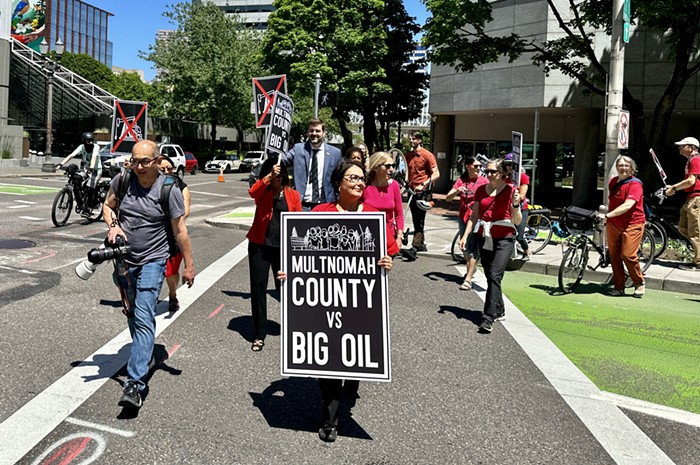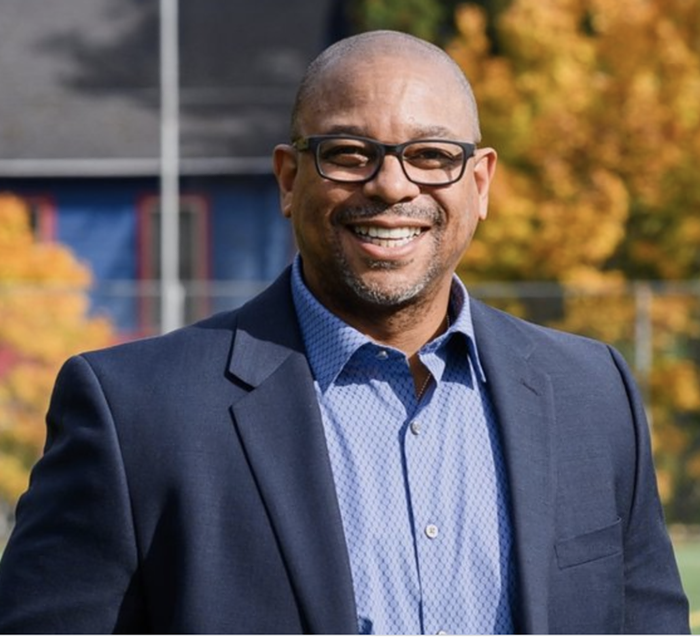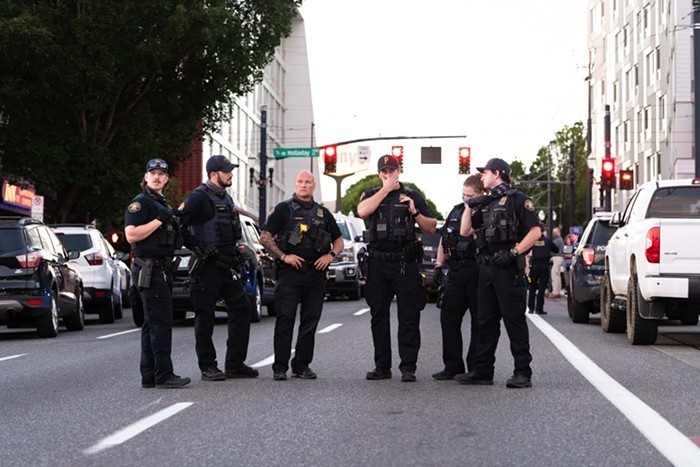For months, I’d been meaning to pay Killjoy Collective a visit. When I finally arrived at the gallery space at Southeast 10th and Sandy last Sunday, I was greeted at the door by collective member BriAnna Rosen and a Shiba Inu mix puppy she’d adopted just the day before. Rosen, clad in floral Birkenstocks, led the way into the small, subterranean gallery where the puppy cozied up to me immediately and the artist talked about her collective, started by a group of PNCA MFA grads as a space for women and women-identified artists. On their website, the group describes their mission this way: “Killjoy Collective celebrates all women, women of color, women of all ages, women of all shapes and sizes, women with visible and invisible disabilities, immigrant women, indigenous women, queer women, trans women, and all those who refuse to be put in a box.” The aim, says Rosen, is to offset the art world’s gender problem. “Male and male-identified artists just get shown more,” she says.

The collective’s approach to feminism is intersectional, and so far it’s extended to several social justice-oriented initiatives, like last February’s Nasty Women Portland pop-up show—100 percent of that show’s proceeds were donated to the Safe Harbor art program, a division of Salvation Army Female Emergency Shelter (SAFES)—and the recent comedy benefit Laugh Your Panties Off, which included an underwear and tampon/pad drive for SAFES. Each month, a different member of the collective curates a show in the space. The one currently hanging, Willy Nilly, features a combination of sculpture, installation, and painting by Kellen Chasuk and Emma Parry. The pieces have a cartoonish, craft-derived quality. They’re funny—especially the row of shelves lined with doodle-like representations of everyday objects that include a bong and a nail polish bottle. Above, there’s a smooshed-looking Kit-Cat clock, and on the floor, Barbie-style pumps with lumpy flowers on them. It’s Fischli and Weiss meets Clarissa Explains It All. I love it. I sort of want to live in it until the Trump administration is over, which is perhaps the entire point, since the space’s opening coincided with his nightmarish rise to power.
On the night of Tuesday, November 8, Rosen and her cohort headed out for margaritas at Century Bar, across the street from the gallery. They thought they’d be celebrating the election of Hillary Clinton, who won the popular vote by more than 2.8 million votes. Instead, the group realized that the country was primed to enter “this horrible era, especially for groups that are already marginalized,” as Rosen describes it. As a collective of women artists making space for women and women-identified artists, it gave them a renewed sense of urgency and purpose, she says. A little over a week later, on November 18, they opened their first show, a collection of works by founding members Rosen, Rachel Brown Smith, Maggie-Rose Condit, E.M. Fuller, Anastasia Greer, and Tessa Heck.

Rosen says Killjoy Collective’s hope, aside from its strong bid for political relevance, is to “be a stable center in a town where right and left art spaces are closing.” It’s also important, Rosen says, that potential visitors know the space and the work are accessible. Though Killjoy Collective’s space is currently open by appointment only, Rosen says she and her colleagues are happy to set up visits. They also host monthly opening parties for the gallery’s shows. “We’re not... high brow,” she says, a message conveyed equally well by the work behind her—the bong, the cat-shaped clock, the goofy high heels. Still, Rosen’s distinction matters a great deal. Even on a low-budget, hyperlocal level, the world of visual art can be uninviting, a state of affairs that isn’t helped by the insularity of art schools and disconnect between moneyed art institutions and the communities they nominally serve.
Having spent plenty of time in institutions like that, I can’t help but root for the scrappy arts collective with intersectional feminism baked into its mission (and also a resident puppy). Art-world sexism may seem like a secondary concern in Trump’s Upside Down America, but the artists we elevate have the power to frame the world we live in. This time, let’s choose wisely.













